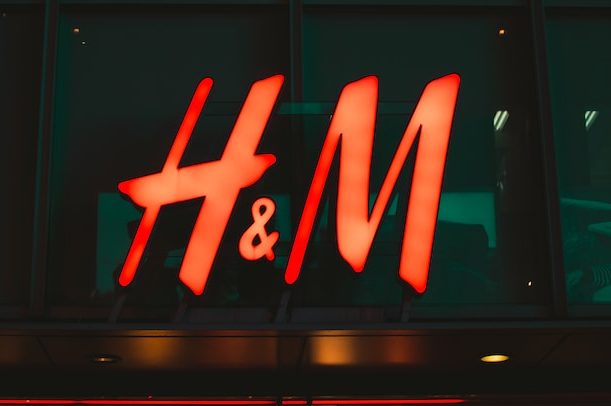Before we get into the specifics of H&M, let’s understand competitor analysis. Competitor analysis is a strategic research method companies use to identify, evaluate, and understand their current and potential competitors within the market. It’s an essential business strategy component and instrumental in understanding the industry landscape.
The process usually involves the following steps:
- Identifying Key Competitors: The first step is to identify who your competitors are. These may be direct competitors (those who offer the same or similar products or services as you) or indirect competitors (those who provide different products or services but compete for the same consumer dollar).
- Analyzing Competitors’ Strategies and Objectives: Once competitors are identified, the next step is to understand their business strategies and objectives. This may involve analyzing their marketing materials, financial performance, customer reviews, or any public information available about the company.
- Assessing Competitors’ Strengths and Weaknesses: This step involves evaluating the identified competitors’ strengths and weaknesses. Strengths include unique products or services, strong brand recognition, and superior customer service. Weaknesses include poor product quality, weak customer service, or high prices.
- Understanding Competitors’ Products/Services: Understanding what your competitors offer and how your products or services compare is important. This could involve looking at features, quality, pricing, customer service, and marketing strategies.
- Observing Competitors’ Reaction Patterns: Some companies react more aggressively than others when faced with competition. Understanding these patterns lets you predict how these companies might respond to your business strategies.
- Drawing Conclusions and Formulating Strategy: The final step is to take all the information gathered from the analysis, draw meaningful conclusions, and use those to formulate or adjust your business strategies.
The main goal of a competitor analysis is to understand the competitive landscape, spot opportunities, and threats, and position your company most advantageously. It helps to inform strategic decisions, from product development to marketing and sales efforts. Now let’s do a competitor analysis of H&M.
Here is the competitor analysis of H&M
Zara
- Supply Chain Management: The biggest difference between Zara and H&M is their supply chain management. Zara is known for its quick-response production system. It keeps a significant portion of its production in-house and nearby (in Spain and the rest of Europe), allowing the brand to design, produce, and have a new product in-store within a few weeks. This flexibility allows Zara to respond rapidly to emerging fashion trends and minimizes overproduction risk. In contrast, H&M outsources all of its production to a network of 800 suppliers, primarily in Asia. This results in longer lead times but lower labor costs. However, it can lead to problems with overproduction if trends change or products don’t sell as well as expected.
- Product Range: Zara tends to focus on a more upscale, fashion-forward product range, creating a sense of exclusivity and urgency by offering limited quantities. H&M, on the other hand, has a broader product range, including budget basics, collaborations with luxury brands, and a home goods line.
- Sustainability: Both companies have committed to becoming more sustainable, but their strategies differ. H&M has launched a “Conscious Collection” and offers garment recycling in its stores. Zara’s parent company, Inditex, aims to use 100% sustainable fabrics by 2025 and become carbon neutral.
- Store Experience: Zara’s store experience tends to be more premium than H&M. Their stores are typically more significant and spaced out, and the products are displayed more organized. H&M stores are usually more densely packed with products.
- Pricing: While both retailers are in the fast-fashion segment, Zara’s prices are slightly higher than H&M’s, reflecting its position as a more premium brand.
- Online Presence: H&M has a more substantial online presence than Zara, having invested heavily in e-commerce. However, Zara has been catching up, and its parent company Inditex has made significant investments in digital transformation.
- How Zara became the undisputed king of fast fashion?
- Zara SWOT Analysis
- Zara Marketing Mix (4Ps)
- Zara PESTEL Analysis
Uniqlo
- Business Model & Product Strategy: One of the most significant differences between H&M and Uniqlo is their product strategy. H&M follows a fast-fashion model, frequently updating its offerings based on current trends and seasons. This strategy involves producing a wide variety of clothing styles in smaller batches, which allows H&M to have something new almost every week. Uniqlo, on the other hand, follows a different strategy. The company focuses on high-quality basics with a timeless aesthetic. Uniqlo emphasizes functionality, quality, and innovation in fabric technology, such as their HEATTECH, AIRism, and Ultra Light Down lines. They offer fewer styles but produce them in large quantities.
- Price Point: While both companies are generally affordable, H&M tends to have a broader price range, including cheaper options and more expensive items, especially in collaborations with luxury brands. Uniqlo’s prices are fairly consistent, reflecting their consistent quality.
- Supply Chain: Like Zara, Uniqlo maintains significant control over its supply chain, ensuring quality control and allowing for innovation in materials and manufacturing processes. H&M, as mentioned earlier, outsources all of its production to an extensive network of suppliers.
- Sustainability: Both companies have committed to sustainability, but their approaches differ. H&M has made substantial strides with its “Conscious Collection” and garment recycling programs. Uniqlo’s parent company, Fast Retailing, has also implemented sustainability initiatives, such as reducing single-use plastic and recycling programs for its clothing.
- Brand Image & Marketing: Uniqlo projects a minimalist, practical, and modern image, focusing on the universal appeal and functionality of its clothes. H&M’s brand image is more fashion-forward, trend-driven, and fun. Their marketing strategies reflect these brand images.
- Store Experience & Online Presence: Uniqlo stores often have a clean, orderly, and spacious layout, with clothes arranged by type and color. H&M stores tend to be more packed, reflecting their broader range. As for online shopping, H&M initially had a stronger e-commerce presence, but Uniqlo has been making strides to enhance its online shopping experience.
- How Uniqlo is Set to become the World’s top fashion retailer
- Uniqlo SWOT Analysis
- Uniqlo PESTEL Analysis
Primark
- Pricing: Both H&M and Primark aim to offer fashionable clothing at low prices, but Primark is often considered one of the cheapest options on the high street, undercutting even H&M in terms of pricing. This incredibly low price point has been a significant competitive advantage for Primark.
- E-commerce Presence: H&M has a strong online presence, allowing customers to browse and shop for their products from their homes. They have invested heavily in their e-commerce operations, understanding that many customers prefer online shopping. On the other hand, as of 2021, Primark has no online shop. Their business model is focused on physical retailing, offering budget clothing in high-volume, high-footfall stores. This could be a competitive disadvantage in today’s increasingly digital retail landscape.
- Product Range: H&M offers a broader product range, with different lines for various demographics and occasions, including basics, activewear, workwear, a luxury collaboration line, and even home decor. While offering a wide variety of products, Primark tends to focus more on basic, trend-driven clothing.
- Sustainability: Sustainability has become a hot topic in the fashion industry. H&M has made significant strides in this area with its Conscious Collection and a garment recycling program. As of my last update, Primark had also started introducing more sustainable ranges and initiatives, but H&M seems to be more advanced in this respect.
- Brand Collaborations: H&M is known for its high-profile collaborations with luxury fashion brands such as Alexander Wang, Versace, and Moschino. These collaborations create a buzz and attract customers looking for affordable versions of high-end designs. Primark does not typically engage in such collaborations, focusing more on producing trend-led clothing at the lowest possible prices.
- Store Experience: Primark stores tend to be large and stocked with a high merchandise volume, with less emphasis on store aesthetics. H&M stores, while offering a wide range of products, often have a more curated presentation and a more diverse visual merchandising strategy.
ASOS
- Retail Format: One of the key differences between H&M and ASOS is their retail format. H&M operates both physical stores and an online platform, while ASOS is purely an online retailer. This allows ASOS to offer a more extensive range of products and sizes, as they have different physical space constraints than a brick-and-mortar store.
- Product Offering: H&M and ASOS offer various trendy, affordable clothing and accessories. H&M also sells home goods, which ASOS does not. However, ASOS stands out in terms of product diversity as they sell items from over 800 different brands and their own line of clothing and accessories.
- Target Market: While both brands target a young, fashion-forward demographic, ASOS tends to target slightly older, more fashion-conscious consumers than H&M.
- Pricing: Both H&M and ASOS offer products at a similar price range, with ASOS having a slightly higher average price due to carrying more premium brands.
- Sustainability: H&M has made strides in this area, particularly with its Conscious Collection and garment recycling program. ASOS has also introduced a ‘responsible edit’ featuring more sustainable materials and processes and a pre-owned clothing section on its website.
- Delivery & Returns: ASOS places a lot of emphasis on its delivery and returns policy as an online retailer. They offer free delivery and returns in many locations and a premier delivery service that provides unlimited next-day delivery for an annual fee. H&M offers online shopping and delivery, but its return policy is typically more restrictive.
Gap
- Brand Image and Positioning: Gap is an American brand known for its classic, casual, and comfortable styles. Its products are often associated with quality and durability. H&M, on the other hand, is a Swedish brand known for its trendy and fashionable clothing at affordable prices. While both brands cater to men, women, and children, their styles and aesthetics cater to different customer preferences.
- Pricing: Both brands fall into the affordable segment of the market, but Gap generally has higher prices due to its positioning as a premium casual wear brand. H&M, as a fast-fashion retailer, offers cheaper, trend-led items.
- Product Range: Gap focuses more on timeless, staple items like jeans, T-shirts, and sweaters, while H&M has a broader product range, offering everything from basics to the latest trends and even home decor. H&M is also known for its high-profile collaborations with luxury designers.
- Online Presence: Both brands have an online presence, but H&M traditionally has a stronger e-commerce platform. The shift to online retail has been challenging for Gap, although it has made strides in this area.
- Sustainability: Both H&M and Gap have made commitments to become more sustainable. H&M has its “Conscious Collection” and a garment recycling program. Gap has also implemented initiatives such as its water-saving Washwell denim program and has set goals for using more sustainable fibers.
- Store Presence: Gap has many stores in North America and a smaller presence in Europe and Asia, whereas H&M has a strong global presence with stores in numerous countries.
- Supply Chain Management: Gap has traditionally controlled a significant portion of its supply chain, owning many factories. H&M, on the other hand, outsources production to an extensive network of independent suppliers, allowing for cost efficiency but at the risk of less control over production standards.
Forever 21
- Product Range: Both H&M and Forever 21 offer various products, including clothing, accessories, and footwear. However, H&M also sells home goods and has high-profile collaborations with luxury fashion designers, offering a more comprehensive product range than Forever 21.
- Pricing: Both brands are known for their affordability, making fashion accessible to a broad audience. However, Forever 21 is often perceived as having a slightly lower price point than H&M.
- Quality: While both brands fall under the fast-fashion umbrella, H&M is often perceived to have a slightly higher quality than Forever 21.
- Brand Image and Positioning: H&M is seen as slightly more mature and diverse in its fashion offering, catering to a broader range of age groups. Forever 21 is perceived to target primarily teenagers and young adults with its trendy and youthful styles.
- Sustainability: H&M has been more proactive in promoting sustainability with initiatives such as the Conscious Collection and a garment recycling program.
- Online and Physical Presence: Both brands have a significant physical and online presence. However, Forever 21 has faced some challenges. They filed for bankruptcy in 2019 and closed a number of their stores. While the brand has since been revived under new ownership and is working to rebuild its image and presence, H&M currently holds a stronger position in the market.
- Supply Chain: Like many fast-fashion retailers, H&M and Forever 21 rely on a network of global suppliers. H&M has made more visible efforts to increase transparency and ethical practices within its supply chain.











